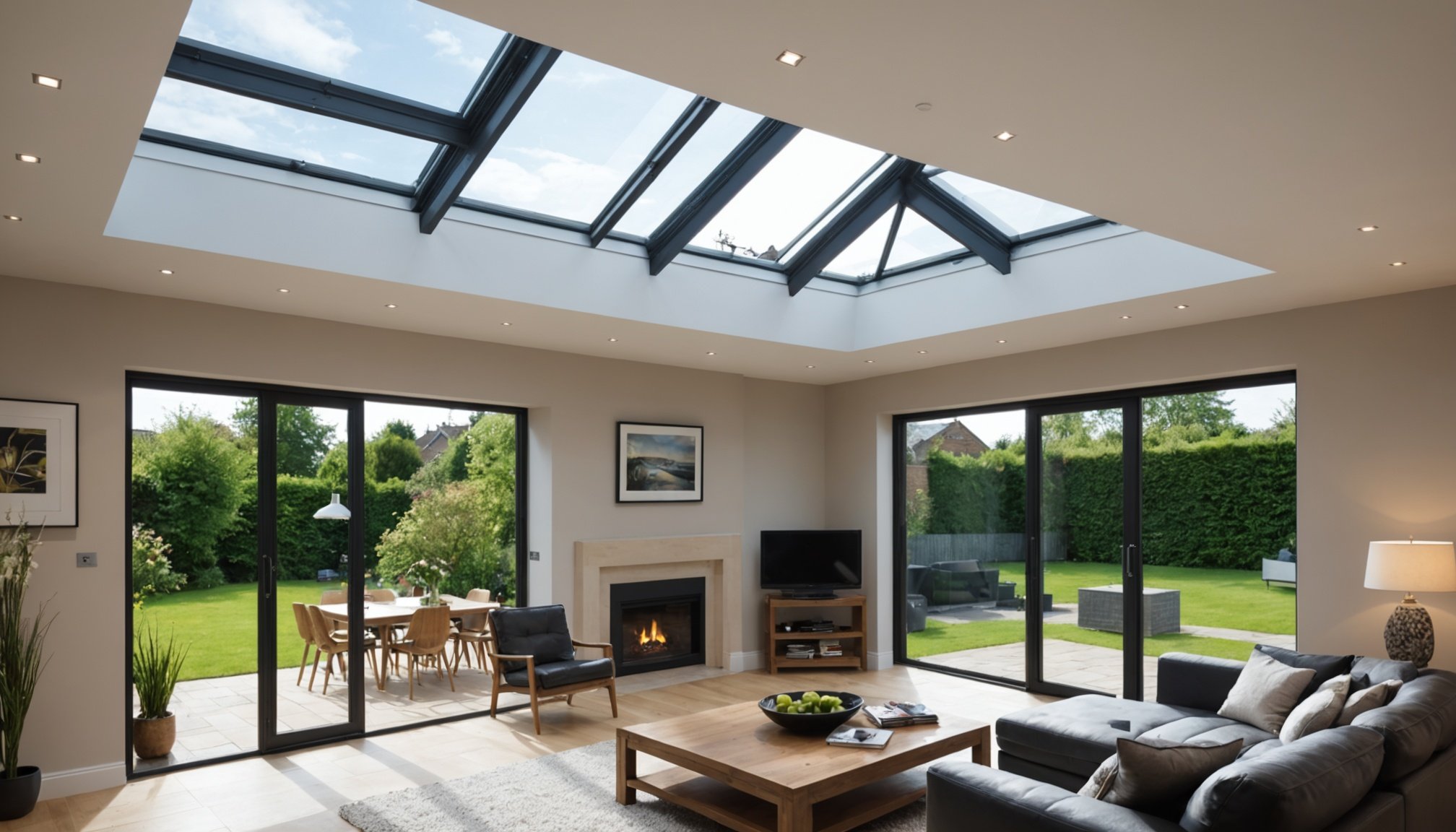Rooflight windows bring abundant natural light and fresh air into your home, transforming even the darkest spaces. By choosing from various innovative designs—like electric, triple-glazed, or conservatory-style options—you can enhance comfort, energy efficiency, and aesthetic appeal. Understanding the differences and installation essentials helps you pick the right solution that fits your needs and budget, creating brighter, healthier living environments.
Overview of Rooflight Windows and Their Benefits
Stylish Roof Windows with a Modern Look play an essential role in maximizing natural lighting within homes. These windows, often called rooflights, allow daylight to flood interior spaces, reducing reliance on artificial lighting and lowering energy costs. They also enhance aesthetics and contribute to improved wellbeing by creating bright, uplifting environments.
Also read : How can I create a stylish yet functional entryway in my home?
Various styles suit many architectural needs, from sleek flat rooflights to traditional roof lanterns. Some models incorporate self-cleaning technology, making maintenance straightforward. Others feature triple glazing for better insulation, with U-values indicating energy efficiency.
Safety and design considerations are critical. Some rooflights are designed for foot traffic, such as walk-on models, while others prioritize thermal performance and aesthetics. Installation guidelines emphasize precise placement to optimize light while minimizing heat loss.
Additional reading : What steps should I take to prepare my home for winter weather?
Types, Features, and Selection of Rooflight Windows
Popular Rooflight Styles and Materials
Flat rooflights are widely chosen for their minimal visibility and seamless integration into modern home designs. These rooflight windows come in both fixed and opening models, with operation types ranging from manual to electric. The choice between manual or electric affects usability, especially for hard-to-reach installations. Aluminium and UPVC are common frame choices, delivering durability and low maintenance, while polycarbonate and glass offer different levels of energy efficiency. Triple-glazed variants and self-cleaning coatings enhance energy efficient roof apertures and minimize maintenance needs.
Specialized Rooflight Options for Unique Needs
For heritage projects, conservation area rooflight options respect architectural guidelines without sacrificing performance. Velux style rooflights are available with versatile glazing and ventilation, aligning with listed building requirements where subtlety is key. Custom sized roof apertures cater to non-standard openings, enabling homeowners to address very specific natural lighting solutions and functional demands, even on challenging flat roof layouts.
Technical Considerations for Effective Selection
When selecting flat rooflights, U-values measure overall thermal efficiency—lower means better insulation. Safety glass is essential for walk-on or accessible installations, offering both impact resistance and peace of mind. Tinted and solar control glazing, available for most rooflight windows, limit solar gain and help maintain desirable indoor conditions even during summer. These advances ensure flat rooflights deliver practical, efficient, and secure lighting across a broad range of property styles.
Installation, Regulations, and Maintenance of Rooflight Windows
Installation Process and Best Practices
Rooflight installation UK projects require careful planning to ensure compatibility with flat rooflights or pitched designs. Whether undertaking DIY or seeking professional help, always confirm frames are waterproof, impact-resistant, and well-insulated. The use of modern, lightweight rooflight window frame materials boosts both energy performance and ease of handling. For best results, check that your chosen rooflight windows integrate seamlessly with existing roof structures and meet energy efficient window options standards.
Planning Permission and Building Regulations
Many rooflight installation UK upgrades fall under permitted development; however, if structural changes are involved, planning permission UK requirements may apply. Adherence to local rooflight window guidelines UK and building regulations is critical, especially in conservation area rooflight options or listed buildings. To ensure a safe and legal setup, only install rooflight windows that feature impact-resistant glass and comply with roof window building regulations.
Maintenance, Longevity, and Repair
Follow recommended roof window maintenance tips—clean glass surfaces regularly and inspect for leaks, especially after storms. Opt for self-cleaning rooflight technology for easier upkeep and extended rooflight window longevity. Address roof window condensation solutions promptly to avoid mold and interior damage. If repairs are needed, weigh the benefits of replacement versus repair with energy efficient glazing options to maximise long-term value.
Optimizing Your Space with Rooflight Windows
Rooflight windows deliver substantial roof daylighting benefits by dramatically increasing natural light in interiors. Compared to traditional windows, these options can often admit nearly three times as much daylight, creating a brighter and more welcoming environment. The result is a home that feels spacious and energizing—a key ambition for anyone seeking effective natural lighting solutions.
When choosing rooflight windows for flat roofs, flat rooflights are especially effective. They can be installed flush to the roof, minimizing water pooling and maximizing weather resistance. Many incorporate energy efficient roof apertures such as double or triple-glazed units, helping maintain indoor comfort and reducing heat loss.
For those in conservation areas, conservation area rooflight options exist to preserve heritage appearances while still enjoying the benefits of improved light and insulation. Most rooflights in the UK follow strict rooflight installation UK regulations, so proper placement and compliance are crucial for lasting performance.
Beyond passive light, integrated skylight blinds and shades offer flexible light control. From blackout blinds for bedrooms to waterproof blinds for bathrooms, options abound to fine-tune privacy and daylight levels. These features boost the versatility of rooflight windows, contributing to both ambiance and energy savings.











